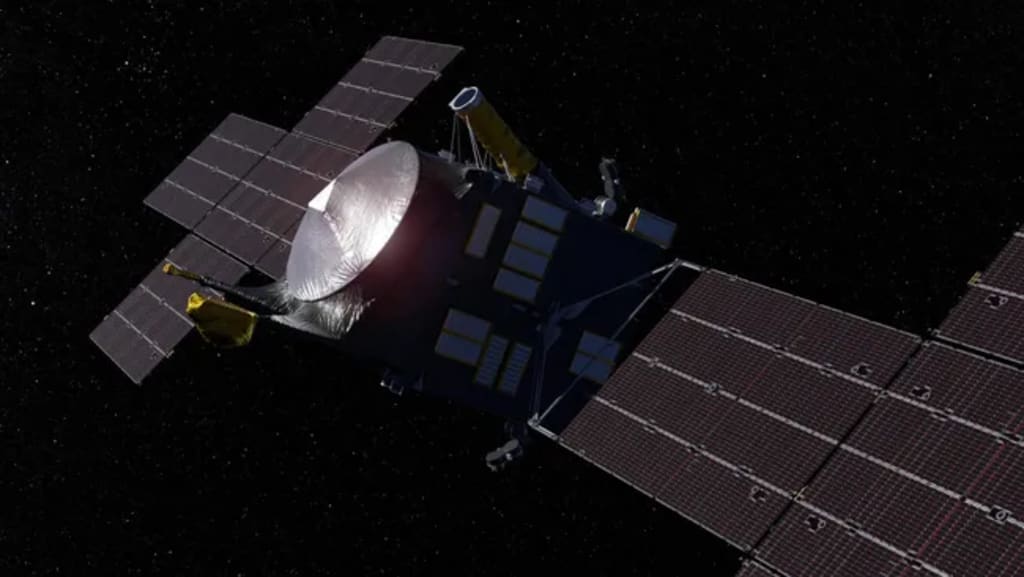Asteroid-bound Psyche spacecraft fires up ion thrusters, starts cruising through space
NASA’s mission to the metal-rich asteroid 16 Psyche has embarked on a fascinating journey, using innovative ion propulsion technology to explore the mysteries of our solar system. Launched on October 13, 2023, the Psyche spacecraft is now traversing the vast expanse of space, propelled by the silent but powerful thrust of its ion engines.

NASA's Psyche Mission: A Journey to the Heart of an Ancient World
NASA’s mission to the metal-rich asteroid 16 Psyche has embarked on a fascinating journey, using innovative ion propulsion technology to explore the mysteries of our solar system. Launched on October 13, 2023, the Psyche spacecraft is now traversing the vast expanse of space, propelled by the silent but powerful thrust of its ion engines.
The Voyage Begins
The initial launch provided Psyche with a significant boost, propelling it beyond Mars' orbit, covering over 190 million miles (300 million kilometers). However, the true marvel of its journey lies in its ion propulsion system, which has now taken over the task of acceleration. This cutting-edge technology converts sunlight into electricity through the spacecraft's expansive solar arrays. The electricity powers an electromagnetic field that accelerates and expels ions of xenon gas, producing a gentle but continuous thrust that propels the spacecraft forward.
Ion Propulsion: A Gentle Yet Powerful Push
While the force exerted by the ion thrusters is minimal—comparable to the pressure of three coins in your hand—it is incredibly efficient in the frictionless environment of space. This constant thrust allows the spacecraft to gradually increase its speed. Currently, Psyche is cruising at an impressive 84,000 miles (135,000 kilometers) per hour, with plans to accelerate to 124,000 miles (200,000 kilometers) per hour.
The Path to Mars and Beyond
As part of its long journey to the asteroid 16 Psyche, the spacecraft will perform a gravity assist maneuver around Mars in May 2026. This technique involves shutting down the ion engines and allowing Martian gravity to slingshot the spacecraft, boosting its speed and setting it on the right trajectory towards its ultimate destination. After this maneuver, the ion engines will reignite, guiding Psyche towards the asteroid it was named after.
The Target: Asteroid 16 Psyche
The asteroid 16 Psyche is a compelling subject for scientific study. Measuring 173 miles (280 kilometers) wide, it is believed to be the metallic core of a protoplanet that never fully formed. This ancient remnant from the early solar system offers a unique opportunity to study the building blocks of terrestrial planets like Earth. By examining 16 Psyche, scientists hope to gain insights into the composition and formation of planetary cores, enhancing our understanding of how rocky planets develop.
Continuous Data Collection
Throughout its journey, Psyche has been anything but idle. The spacecraft is equipped with various scientific instruments that have been gathering valuable data. Its magnetometer and gamma-ray and neutron spectrometer have already detected charged particles from solar coronal mass ejections. Additionally, Psyche is pioneering a new deep-space optical communications technology, using lasers to transmit data over vast distances. In a recent test, the system successfully beamed data back to Earth at a rate of 267 megabits per second from 140 million miles (226 million kilometers) away, a speed comparable to home broadband internet.
The Legacy of Ion Propulsion
Psyche’s use of ion propulsion is not unprecedented. NASA's Dawn mission previously employed similar technology to explore the asteroid belt, visiting both Ceres and Vesta. These missions highlight the practical application of ion propulsion, a technology once considered the realm of science fiction, famously depicted in the Star Wars universe as the driving force behind TIE fighters (Twin Ion Engines).
A Bright Future
"Until this point, we have been powering on and checking out the various pieces of equipment needed to complete the mission, and we can report they are working beautifully," said Henry Stone, the Psyche project manager at NASA’s Jet Propulsion Laboratory. This statement underscores the successful operation of the mission so far and the promise it holds for future discoveries.
Conclusion
NASA's Psyche mission is a testament to human ingenuity and our relentless quest to understand the cosmos. As the spacecraft continues its journey, it not only advances our knowledge of the solar system's history but also paves the way for future explorations using innovative technologies. The mission to 16 Psyche stands as a beacon of scientific progress, illuminating the path to new frontiers in space exploration.
About the Creator
Raju Moses
I am a fascinating Writer of all available trending topic in the world.
Enjoyed the story? Support the Creator.
Subscribe for free to receive all their stories in your feed. You could also pledge your support or give them a one-off tip, letting them know you appreciate their work.





Comments (1)
Hey, just wanna let you know that this is more suitable to be posted in the FYI community 😊